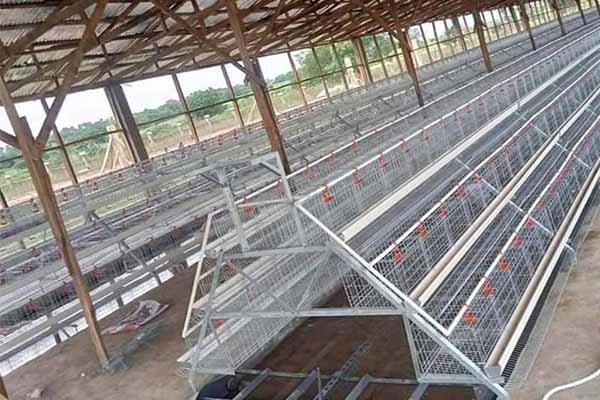Poultry Farming in Nakuru: A Comprehensive Guide
Time : 2025-05-12
Nakuru, with its lush landscapes and favorable climate, has become a hub for poultry farming in Kenya. If you’re considering venturing into this industry or looking to improve your existing poultry operation, you’ve come to the right place. In this article, we’ll delve into the ins and outs of poultry farming in Nakuru, providing you with valuable insights and practical tips to help you succeed.
Understanding Poultry Farming in Nakuru
Location and Climate
Nakuru is located in the Rift Valley region of Kenya, known for its high altitude and cool climate. This environment is ideal for poultry farming, as it reduces the risk of heat stress in the birds. The cool temperatures also mean that the poultry can produce eggs and grow faster than in warmer regions.
Types of Poultry
In Nakuru, you’ll find a variety of poultry being farmed, including chickens, ducks, turkeys, and guinea fowl. Chicken farming is the most common, given its high demand and profitability. However, diversifying your poultry types can open up new market opportunities.
Market Demand
The demand for poultry products in Nakuru and its surrounding areas is robust. Local restaurants, hotels, and markets are always looking for fresh, high-quality poultry. Additionally, the growing population and urbanization in the region have increased the demand for poultry meat and eggs.
Setting Up Your Poultry Farm
Land Acquisition
The first step in setting up a poultry farm is to secure a suitable piece of land. Look for a location that is easily accessible, has a reliable water source, and is close to potential markets. Land in Nakuru is relatively affordable, making it an attractive option for poultry farmers.
Infrastructure
Your poultry farm will require proper infrastructure to ensure the health and productivity of your birds. This includes:
– Chicken Coops: Design coops that provide adequate space for the birds to move around, lay eggs, and sleep. Consider using environmentally friendly materials to reduce costs and environmental impact.
– Water and Feed Systems: Install reliable water and feed systems that can meet the needs of your entire flock.
– Ventilation: Ensure that your coops have proper ventilation to keep the birds cool during hot weather and maintain air quality.
Birds and Stocking Density
When selecting your poultry, consider the type of birds that best suit your farming goals and market demand. For instance, layer chickens are popular for egg production, while broiler chickens are bred for meat. It’s also important to consider the stocking density. Overcrowding can lead to health issues and reduced productivity.
Managing Your Poultry Farm
Feeding and Nutrition
Proper nutrition is crucial for the health and productivity of your poultry. Provide a balanced diet that meets the nutritional requirements of your birds at each stage of their life cycle. Consult with a veterinarian or a poultry nutritionist to develop a feeding plan.
Health and Disease Prevention
Regular health checks and vaccinations are essential to prevent diseases that can decimate your flock. Keep a close eye on your birds for any signs of illness and consult with a veterinarian immediately if you notice any issues.
Biosecurity
Implement strict biosecurity measures to protect your flock from external threats. This includes limiting access to your farm, cleaning and disinfecting equipment, and monitoring for any signs of disease.
Marketing Your Poultry Products
Direct Sales
Consider selling your poultry products directly to consumers. This can be done through farm gates, markets, or even online platforms. Direct sales can offer higher profits and provide a better connection with your customers.
Wholesale
Wholesale can be a good option if you produce a large volume of poultry. Establish relationships with local restaurants, hotels, and markets to ensure a steady stream of orders.
Value-Added Products
Consider adding value to your poultry products by processing them into different forms. For example, you can process chicken into sausages, soups, or other ready-to-eat meals.
Challenges and Solutions
Challenges
– Market Volatility: Prices for poultry products can fluctuate significantly, impacting your profitability.
– Competition: The poultry industry is highly competitive, especially with large-scale producers.
– Climate Change: Changes in weather patterns can affect your farming operations.
Solutions
– Diversify Your Products: By diversifying your products, you can reduce your reliance on a single market and stabilize your income.
– Stay Informed: Keep up-to-date with market trends and competitor pricing to make informed decisions.
– Adapt to Climate Changes: Implement climate-resilient farming practices to protect your farm from extreme weather events.
Conclusion
Poultry farming in Nakuru offers a promising opportunity for entrepreneurs and farmers. By understanding the market demand, setting up the right infrastructure, managing your flock effectively, and marketing your products wisely, you can achieve success in this industry. Remember to stay informed, adapt to challenges, and always prioritize the health and welfare of your birds.












